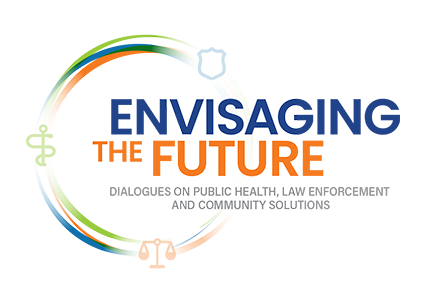
by Prof. Stan Gilmour FRSA, GLEPHA Fellow
Policing for Prevention – 10 Key Points:
The traditional “reactive” approach to policing, solely focused on apprehending criminals after crimes occur, has faced growing criticism for its limitations in addressing the root causes of crime and fostering safer communities. Enter the public health approach to policing, a paradigm shift gaining traction worldwide. This approach views crime as a public health issue, like the spread of disease, and emphasises prevention through evidence-based early interventions and collaboration with community stakeholders.
While still in its early stages of implementation, this approach holds immense potential to create safer, more just communities and improve the public’s perception of law enforcement. Let’s delve into the key benefits of taking a public health approach to prevention:
1. Addressing Root Causes, Not Just Symptoms: Traditional policing often treats crime as an individual moral failing, neglecting the complex social, economic, and environmental factors that contribute to it. A
public health approach, however, acknowledges these deeper issues, such as poverty, lack of opportunity, and mental health challenges. By partnering with social services, education institutions, and other community organisations, police can address these root causes, preventing crime before it starts.
2. Building Trust and Legitimacy: Reactive policing, with its focus on enforcement and arrests, can sometimes create an adversarial relationship between the police and the community. A public health
approach emphasises building trust and legitimacy through community engagement, collaboration, and problem-solving partnerships. This fosters better communication, cooperation, and ultimately, safer neighbourhoods.
3. Reducing Criminalisation and Breaking Cycles: The traditional (criminal) justice system often fails to address the underlying issues that led to criminalised behaviour, increasing the likelihood of recidivism. A public health approach focuses on rehabilitation and reintegration, partnering with social services and mental health professionals to provide support and resources to individuals exiting the criminal justice system. This reduces the chances of them re-offending, creating safer communities in the long run.
4. Focusing on Data-Driven Solutions: The public health approach is grounded in evidence-based practices and data analysis. Police departments collect and analyse crime data to identify hotspots, trends, and risk factors. This information guides targeted interventions, resource allocation, and policy development, ensuring their effectiveness and maximising impact. Collaborating with health and social care as well as other organisations to share data helps to build a more complete, less biased, picture of risk and protective factors for prevention.
5. Addressing Public Health Inequities: Crime tends to cluster in communities facing higher rates of poverty, unemployment, and limited access to healthcare. A public health approach recognises these disparities and aims to address them. By partnering with public health agencies and community organisations, police can tackle factors like social isolation, lack of educational opportunities, and limited access to healthcare, contributing to crime reduction and improved overall community well-being.
6. Improved Police-Community Relations: Engaging with communities as partners fosters mutual understanding and respect. Police officers participating in community events, problem-solving forums, and youth mentoring programs build positive relationships with residents, leading to increased trust and cooperation. This collaboration also empowers communities to identify and address issues proactively, further enhancing safety.
7. Cost-Effectiveness: While investing in preventive measures requires initial resources, it can prove cost-effective in the long run. By focusing on prevention and rehabilitation, resources previously used for arrests and incarceration can be redirected towards community programs and social services, ultimately reducing crime and associated costs.
8. Reduced Burden on Justice System: Reactive policing places a significant burden on the justice system, leading to overcrowded courts and prisons. By preventing crime and investing in rehabilitation, the public health approach can alleviate this pressure, allowing the justice system to focus on more serious and complex cases.
9. Enhanced Officer Well-being: Traditional policing can be stressful and often involves negative interactions. A public health approach encourages positive community engagement and problem-solving, leading to more fulfilling experiences for officers. This can contribute to improved morale, job satisfaction, and reduced stress, enhancing overall well-being.
10. A More Just and Equitable Society: Crime disproportionately impacts marginalised communities. A public health approach, which addresses the root causes of crime and focuses on equity, can contribute to a fairer and more just society for all. By investing in community well-being and addressing systemic inequalities, this approach can create a safer environment for everyone. The public health approach to policing is not a silver bullet, but it offers a promising path towards safer, more just communities. By focusing on prevention, collaboration, and evidence-based interventions, this approach can transform the relationship between law enforcement and the public, leading to a future where prevention triumphs over punishment.






